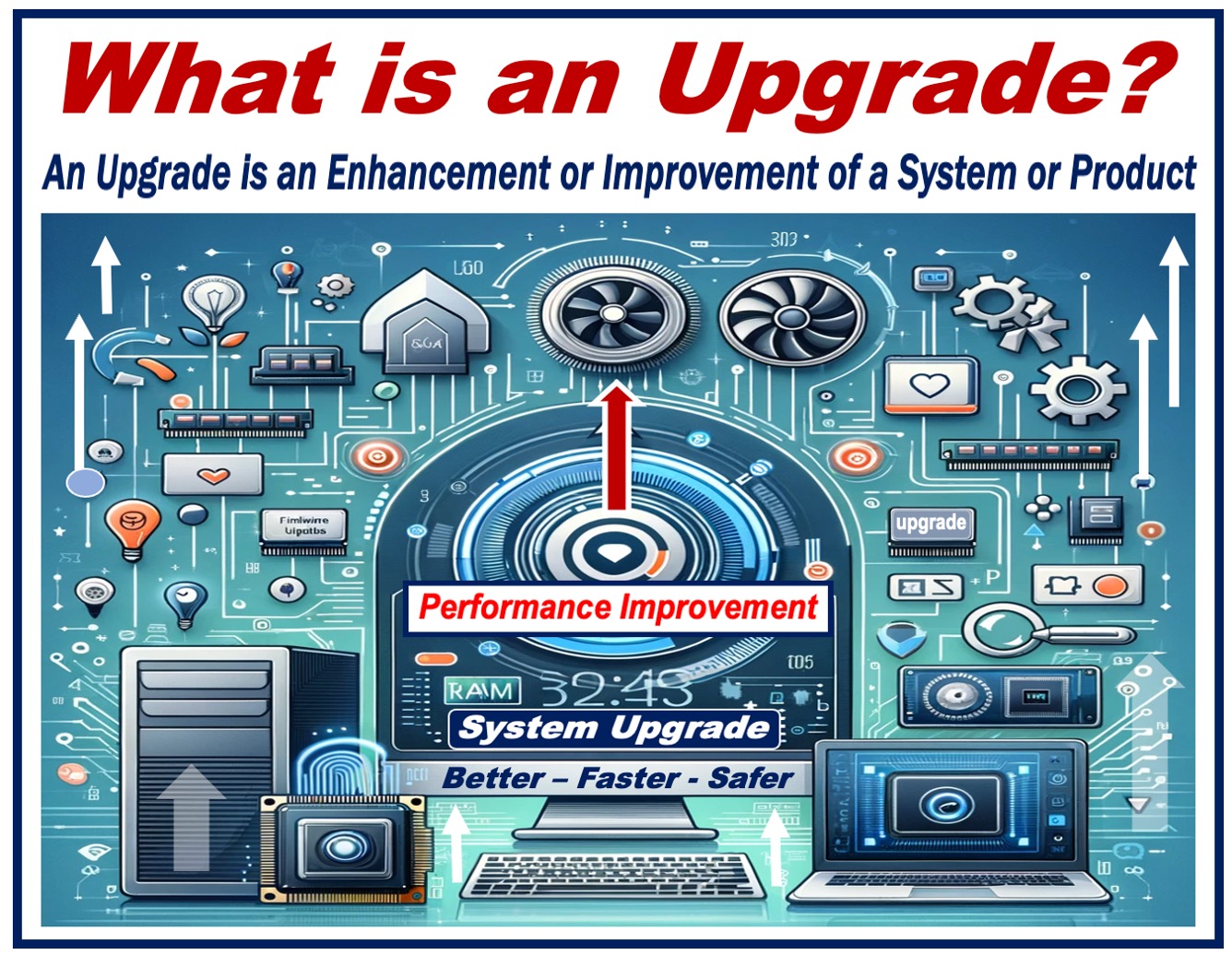What is an upgrade?
An Upgrade in the world of technology means the process of improving or replacing a system or component to improve its performance, capabilities, or features. Upgrades are done to stay up-to-date with technological advancements and meet evolving user needs.
Types of upgrades
There are various types of upgrades, such as:
-
Software Upgrade
This involves updating or replacing a software application with a newer version. The newer version may include bug fixes, improved performance, or new features.
-
Hardware Upgrade
This involves enhancing a device’s physical components, such as upgrading a computer’s RAM, storage capacity, or graphics card.
-
Firmware Upgrade
This refers to updating the embedded software that controls the functionality of hardware devices.
-
Service Upgrade
In most cases, this involves moving to a higher tier or plan, which may provide the customer access to additional features or resources.
-
Operating System Upgrade
This involves upgrading to a newer version of an operating system. The benefits usually include improved security, enhanced performance, and new features.
Reasons for upgrades
-
Performance improvement
Upgrades aim to enhance the speed, efficiency, and overall performance of a system or component.
-
Feature enhancement
New features or capabilities are frequently added to meet evolving user requirements.
-
Security updates
It is important to have the most recent security patches installed on devices, systems, and software to guard against vulnerabilities.
-
Compatibility
Regular upgrades ensure compatibility with new software, hardware, and evolving standards in the technological landscape, as well as with other devices.
-
User experience
Upgrades can significantly improve the user experience by offering more customization options, an easier-to-use interface, or both.

Upgrade process
Usually, the process goes like this:
-
Assessment
Evaluating the system’s or component’s current state to determine whether an upgrade is necessary.
-
Planning
Create a detailed plan that outlines all the necessary steps, potential obstacles, and expected outcomes.
-
Backup
To avoid losing data in the event of unanticipated problems, make sure you have a backup before starting any upgrade.
-
Execution
Carry out the upgrade, which may include necessary firmware updates, hardware component replacements, or software installations.
-
Testing
Test the newly upgraded system to ensure it is free of problems.
-
User Communication
Explain the upgrade, its benefits, and any potential changes to users or stakeholders.
-
Training
Provide training or documentation to users if the update introduces new features or changes functionality.
Challenges
When upgrading, you may encounter several challenges, including:
-
Downtime
Some upgrades may require system downtime, which can impact normal operations.
-
Compatibility issues
It is essential to ensure that the upgraded systems or software are compatible with existing hardware and other software components.
-
Data migration
Migrating data during an upgrade and maintaining data integrity can be a complex process.
-
User resistance
Some users might not want to upgrade due to a lack of effective communication or adequate training.
Other sectors
Upgrading is not limited to technology. Look at these examples below:
-
Airline Ticket
Moving to a higher class in air travel, like from economy to business or first class, often for added comfort and better service.
Example: “I decided to upgrade my airline ticket to first class for a more comfortable long-haul flight.”
-
Hotel Room
Upgrading to a more luxurious room or suite, typically offering more space, luxury, and sometimes a superior view.
Example: “For our anniversary, we were delighted to receive a complimentary upgrade to a luxury suite at the hotel.”
-
Car Upgrade
Switching from an older model to a newer one, usually with more advanced features or luxury.
Example: “After years of driving the same old sedan, I’m finally considering an upgrade to a hybrid model.”
-
Membership Status
Increasing the level of a membership in clubs or services for access to exclusive benefits.
Example: “Upgrading my gym membership to include access to all locations has been a game changer for my fitness routine.”
-
Home Appliances
Replacing older appliances like refrigerators or washing machines with newer, more efficient models.
Example: “We’re upgrading our kitchen appliances to more energy-efficient models during the renovation.”
-
Furniture
Exchanging old furniture pieces for new ones that offer better quality, comfort, or style.
Example: “As part of our home makeover, we’re upgrading our living room furniture to a more modern and comfortable style.”
Written by Nicolas Perez Diaz

